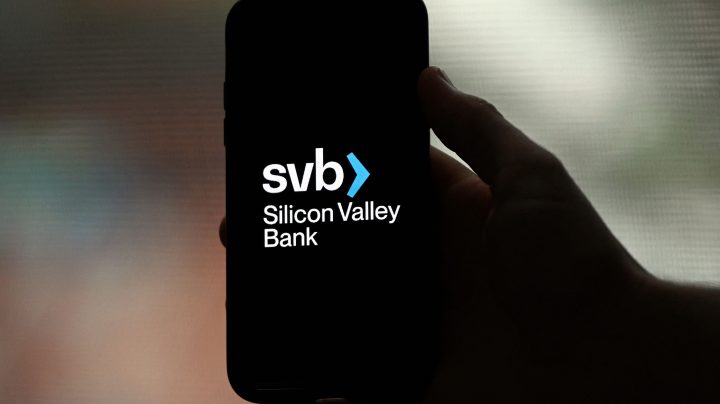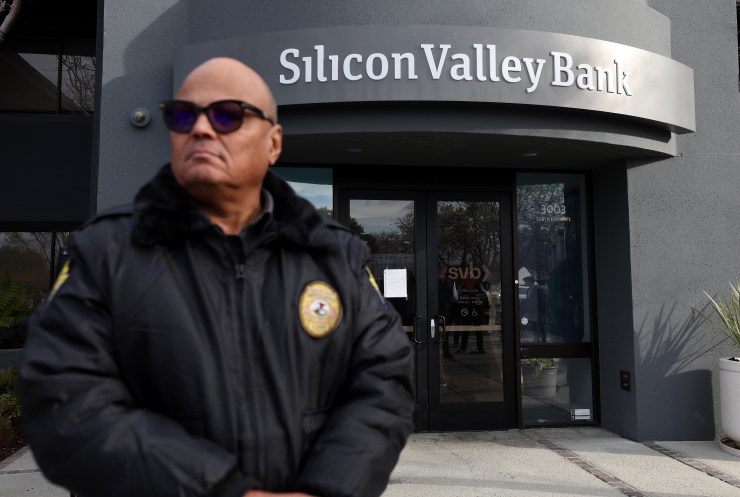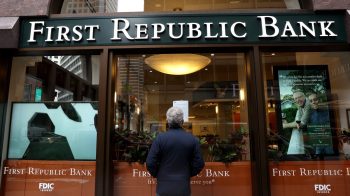
The banking crisis: What you actually need to know

In early March, Silicon Valley Bank and Signature Bank, two of America’s mid-sized banks, collapsed — some of the biggest failures of financial institutions since the Great Recession. Those collapses were then followed by First Republic Bank, which was seized by regulators and sold to JPMorgan Chase on May 1 before U.S. markets opened.
The government has since stepped up to make depositors whole and prevent a potential ‘contagion’ of anxiety in the banking sector. The story has been moving quickly and plenty of Americans who lived through 2008 are instinctively comparing the current upheaval to the last time multiple bank collapses were making headlines.
But unless you’re in the tech or startup sector, odds are your money never touched Silicon Valley Bank or Signature Bank. Even First Republic’s clientele was largely relegated to affluent depositors. So what are we supposed to make of all this? We’ve got you covered on everything you need to know so far:
To jump to the answers for each question, click on the bullet points below:
- So what happened to Silicon Valley Bank and Signature Bank?
- What about First Republic Bank?
- Was this a bailout?
- Is this the same as what happened in 2008?
- Who pays for these bank failures?
- I’m not a millionaire and I’m not in tech. How does this affect me?
- Could this spark layoffs?
- How is this impacting the housing market?
- Is this affecting the Federal Reserve and rate hikes?
So what happened to Silicon Valley Bank and Signature Bank?
On Friday, March 10, Silicon Valley Bank officially collapsed after a bank run. The bank had been forced to sell government bonds at a loss to let customers withdraw their funds. That same day, the Federal Deposit Insurance Corp. seized the bank’s assets.
Unless you’re a part of the tech world, SVB probably wasn’t a bank you had heard of or invested with. (It may have just been lumped in with one of those tech bro acronyms that stirred financial drama in recent months.) But it’s still a big deal. SVB was the bank of choice for many venture capitalists and startups. (Oh, and California wineries, too.)
Then, on Sunday, March 12, regulators took control over New York’s Signature Bank, which had been caught up in a flurry of bank stock sales following SVB’s collapse.
That same day, the FDIC, Federal Reserve and Treasury Department announced that SVB and Signature Bank customers would have access to all of their funds starting on March 13 — above and beyond the FDIC-insured cap of $250,000. The major move was made possible through a “systemic risk exception,” which designated both bank failures as potential threats to the U.S. economy and banking systems.
On March 19, New York Community Bank agreed to purchase a major portion of Signature Bank in a $2.7 billion deal. Signature Bank’s 40 branches have now been rebranded as Flagstar Bank — one of New York Community Bank’s subsidiaries.
The auctioning off of Silicon Valley Bank’s assets took a while longer, with little appetite from peers and larger banks alike. But on March 26, First Citizens Bank agreed to the purchase of all of Silicon Valley Bank’s loans and deposits. The FDIC still retains significant assets of both Signature Bank and SVB — $60 billion and roughly $90 billion, respectively — that remain in receivership but are likely to be sold off.
What about First Republic Bank?
While Silicon Valley Bank and Signature Bank collapsed rapidly, the demise of First Republic was much more protracted. On March 16, First Republic Bank — whose stocks nosedived earlier in the week — received a cash infusion of $30 billion from a collective of 11 larger banks to prevent a potential collapse. Ultimately, that wasn’t enough to save it.
After the SVB debacle, spooked depositors withdrew roughly $100 billion from First Republic and short sellers made more than a billion dollars that bank would tank. It was then seized by regulators overnight and immediately sold to JPMorgan Chase before markets opened on Monday, May 1. First Republic’s failure marks the second largest bank failure in U.S. history and may lead to increased scrutiny of JPMorgan, which was already the nation’s largest bank before its latest acquisition.

Was this a bailout?
Great question … and it depends on who you ask.
A bailout is traditionally defined as an infusion of cash or resources to a business that otherwise is on the brink of collapse — like bankruptcy or default. In that sense, then the answer is yes.
But this wasn’t a complete bailout. Executives have been ousted, and shareholders and bondholders have not been made whole.
Some economists who have spoken to Marketplace in recent days have made some stark assessments, however.
“Let’s be clear that this is not just a bailout of Silicon Valley Bank’s uninsured depositors or Signature Bank,” Wharton School professor of financial regulation Peter Conti-Brown told Marketplace Morning Report’s David Brancaccio. “This is a bailout of every other poorly managed bank that the market was ready to send into insolvency.”
The Federal Reserve also recently launched a program aimed at helping eligible banks and credit unions have cash on hand through government loans at favorable rates, all to avoid potential bank runs. On a recent “Marketplace Morning Report” episode, Monetary Macro chief investment officer Joseph Wang didn’t mince words about his thoughts on the lending program: “This is basically the biggest bailout to the banking sector since the great financial crises.”
So is this the same as what happened in 2008?
The economy we’re in is very different from the economy that predated the Great Recession. Given that the collapse of SVB marked the largest bank failure since ‘08, though, it can feel easy to draw those comparisons.
Dodd-Frank banking regulations — implemented following the 2008 financial crisis — were partially rolled back under the Trump administration, but the rules still apply to larger financial institutions, like the Citi Banks and JPMorgan Chases of the world. (It should be noted though that the CEO of SVB explicitly lobbied to be exempt from banking regulation reforms in the wake of the Great Recession).
The aughts-era bailout also aided investors who had stakes in large banks — not just the folks who happened to hold deposits. Another key difference is also which parties were paying for the bank failures.

Who pays for these bank failures?
Unlike the bailout of 2008, taxpayers are not on the hook for the collapses of Silicon Valley Bank and Signature Bank. Rather, it’s other banks who are footing the bill.
The Federal Deposit Insurance Corporation is exactly as it sounds — a sort of insurance that banks and other financial institutions pay into to insure customer deposits.
“Banks are going to pay for it,” said Laurie Stewart, president and CEO of Sound Community Bank in Seattle, in an interview with Marketplace host Kai Ryssdal on March 13. “People still buying insurance, which are the other banks that are surviving, are going to pay higher premiums … the fact that depositors are made whole, that cost is going to be borne by the industry. And that’s how it works and that’s how it should be.”
I’m not a millionaire and I’m not in tech. How does this affect me?
At the moment, the odds are, not a ton.
Anxieties about a potential domino effect in banking systems failing are persistent.
Swiss bank Credit Suisse, plagued by scandal for the past several years, also appeared to be teetering recently. Though the Swiss central bank stepped in and offered a loan of up to $54 billion, it did little to rein in customer and investor anxieties. Then, in a deal brokered by Swiss regulators and announced late Sunday, March 19 (before markets opened), multinational bank UBS agreed to purchase Credit Suisse for a discounted rate of $3.25 billion in an attempt to avoid further global banking upheaval.
For those who have funds in the stock market, it may be tempting to check your portfolio daily to see how investments are doing (though personal finance experts consistently warn investors against doing exactly that). So far, it appears the stock market has largely been able to ignore the implosions of two (almost three!) American banks. Despite stock rattles here and there and a tumble on the Friday of Silicon Valley Bank’s failure, stocks finished the week relatively mixed.
Regardless of whatever investments you have, weakening faith in global banking systems could impact you. If more people globally demand full access to their funds, bank runs and failures could infect financial systems all around the world.
If you have under $250,000 in an FDIC-insured account — and to be clear, most Americans fall well, well, well beneath that threshold — you are protected by the full faith and credit of the U.S. government. Ironically, if you bank with SVB or Signature Bank, your deposits are protected to an even greater extent, as there’s no threshold on the amount of money that’s insured. Will that assurance be extended to customers of other financial institutions? Janet Yellen says not to hold your breath.
So if you’re lucky enough to have upwards of $250,000 and want to ensure that your assets are secured, you could always do what NBA Bucks star Giannis Antetokounmpo does and have multiple bank accounts — in his case, 50 — each holding up to the max FDIC-insured limit of $250,000.
Could this spark layoffs?
It’s unlikely that the failure of SVB, Signature Bank and First Republic will impact the jobs of most Americans.
To be clear, had the feds not invoked the systemic risk exemptions, tech companies and startups that had a large amount of funds with SVB or Signature Bank could have had layoffs on the horizon. After all, how can companies pay employees if all of their reserves have evaporated? That included firms like Roku, which had $487 million in uninsured deposits and other holdings with SVB, as well as companies like Roblox, Zoominfo, Coinbase and Binance.
As for employees who work at the failed institutions, the future is a bit more murky. CNN reports that the FDIC offered SVB employees 1.5 times their salary for 45 days. Though it’s generally customary for employees of collapsed banks to continue working in any sort of transitory period, layoffs are likely following the purchases of both failed banks.
How is this impacting the housing market?
It’s unlikely that the bottom will drop out of the housing market the way it did during the Great Recession. That downturn was triggered by the burst of the U.S. housing bubble. It’s true that home prices have skyrocketed during the pandemic, and while experts expect prices to dip, prices are unlikely to drop as severely as they did during the financial crisis or cause as dramatic a ripple effect throughout the rest of the financial ecosystem.
So far, mortgage rates have dipped slightly in the wake of recent bank collapses. Though this could indicate a (potentially temporary) softening of mortgage rates, some economists are forecasting a tightening of credit — including home loans — as banks try to keep more liquid assets on hand.
SVB’s implosion may also deflate housing costs in areas like San Francisco and Seattle that are traditionally lifted by tech employment and stocks. Yet affordable housing developers throughout California used SVB for construction loans, and its implosion is stoking fears of development delays.
Of course, the direction mortgage rates go is dependent on the next moves by the Fed.
Is this affecting the Federal Reserve and rate hikes?
The Federal Reserve remains steadfast in its aim to tame inflation, but the collapse of two high-profile banks has made its job all the more complicated. Major banks have slashed interest rate expectations for the year; while traders earlier in the month were betting on a half-point rate hike announcement at the Fed’s March meeting, Goldman Sachs projected that the Fed would not raise interest rates at all, citing anxieties in the larger banking industry — and it wasn’t alone.
Ultimately, the Fed landed on a quarter-point rate hike — a sort of middle-ground in trying to balance the fight against inflation with the need to maintain financial stability. The Federal Reserve also indicated that its series of aggressive rate increases is likely nearing its end, admitting that the recent banking turmoil will likely “result in tighter credit conditions” and “weigh on economic activity, hiring and inflation.”
Last updated May 1.
There’s a lot happening in the world. Through it all, Marketplace is here for you.
You rely on Marketplace to break down the world’s events and tell you how it affects you in a fact-based, approachable way. We rely on your financial support to keep making that possible.
Your donation today powers the independent journalism that you rely on. For just $5/month, you can help sustain Marketplace so we can keep reporting on the things that matter to you.


















